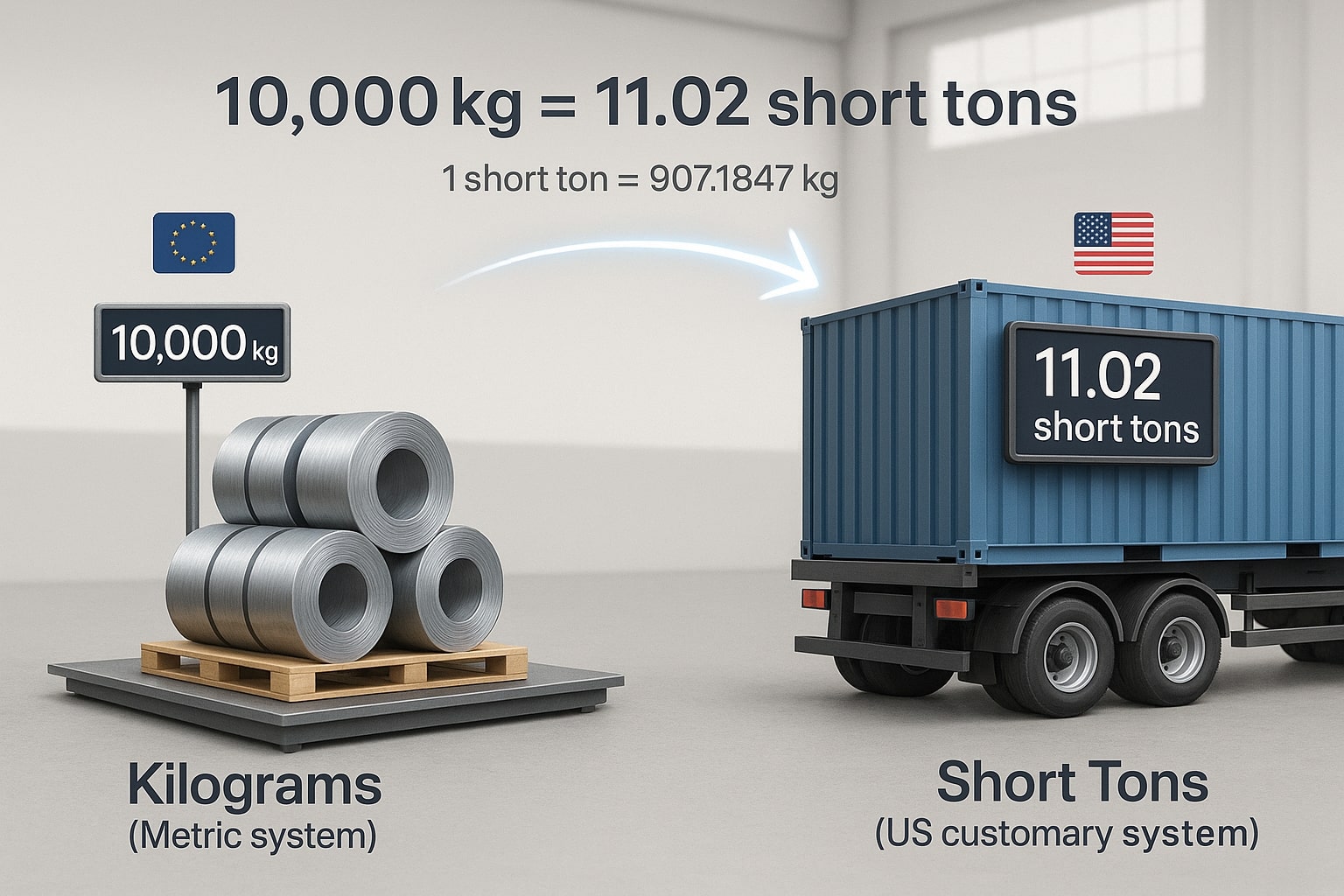Title: kg to short ton – Convert kilogram to short ton
H1: kg to short ton – How to convert kilogram to short ton?
Meta Description: Learn how to convert kg to short ton accurately. Understand what a kilogram to short ton conversion means in science, shipping, and industry.
kg to short ton – How to convert kilogram to short ton?
In industries like shipping, construction, and agriculture, converting kilograms to short tons is more than just a math problem—it’s a key to standardizing global operations. While most of the world operates on the metric system, the United States continues to use customary units, including the short ton, particularly in freight, mining, and manufacturing reports.
What Are Kilograms and Short Tons?
-
A kilogram (kg) is the base unit of mass in the metric system, defined by the Planck constant and used worldwide for scientific and commercial measurements.
-
A short ton, on the other hand, is a U.S. customary unit equal to 2,000 pounds, or roughly 907.18474 kilograms. Despite their shared purpose—measuring large weights—their origins, applications, and systems are completely different.

To convert kilograms (kg) to short tons (U.S. tons), divide the weight in kilograms by 907.18474.
Formula:
Short ton = Kilogram ÷ 907.18474
For example:
1,000kg = 1.1023 Short Tons
5,000 kg = 5.5116 Short Tons
Did you know?
-
The U.S. short ton (2,000 lb) is lighter than both the UK long ton (2,240 lb) and the metric tonne (1,000 kg)—yet it's still the standard in American industry.
-
A single wind turbine blade can weigh over 15,000 kg, which equals more than 16.5 short tons—and that’s just one blade.
-
In the U.S. Department of Agriculture’s grain reports, harvest volumes like corn and soybeans are still measured in short tons, not metric tonnes.
-
The Statue of Liberty’s copper skin weighs about 27.2 metric tonnes, or just under 30 U.S. short tons.
-
Military tanks like the M1 Abrams can weigh over 60 short tons, requiring reinforced transport systems rated far beyond metric limits.
From Short Tons to Kilograms at the Panama Canal
In one case, a U.S. bulk carrier transporting 50,000 short tons of corn needed weight verification in kilograms to meet port regulations in Japan. The ACP’s dual-unit system made it possible to calculate the exact 45.36 million kg required, without confusion or delay. This seamless unit conversion helps prevent costly loading errors, navigational risks, and international disputes in global trade.

Conclusion
How to convert kilograms to short tons isn’t just about numbers—it’s essential for accuracy in global trade, logistics, and engineering. Whether you're handling bulk shipments or interpreting industrial data, mastering this conversion ensures clarity across metric and U.S. customary systems
Check our Weight converter and Conversion tools for more.

